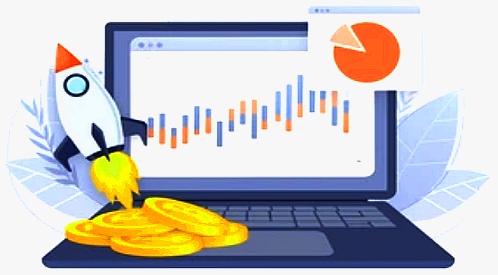Accredited InvestorsAltcoinAnatoli UnitskyAnti-Money Laundering (AML) In CryptoAPIArbitrageArtCoin TokenArticle DirectoryASICAuction Terminology GlossaryBasics of Stock Market InvestingBear MarketBest Crypto Payment Provider In the WorldBitcoinBlockchainBlockchain ConfirmationBlockchain Consensus MechanismBlockchain ForkBlockchain GlossaryBored Ape Yacht ClubBuild a Business That OutperformsBull MarketBuying SkyWay SharesByzantine Fault Tolerance (BFT) ExplainedCasascius CoinCentral Bank Digital Currency (CBDC)Centralized Crypto ExchangeCoinCoinsetCold WalletCollateralCommodity Futures Trading Commission (CFTC)Cross-Chain TechnologyCRUCrypto ExchangeCrypto GlossaryCrypto JokesCrypto Terms to KnowCrypto TickerCryptocurrencyCryptographyCryptojackingCryptounit BlockchainCryptounit GlossaryCryptounit ProgramdApp (Decentralized Application)Dead CoinDecentralized Exchange (DEX)Decentralized Finance (DeFi)Difference Between Bitcoin and EthereumDifferent Ways of Investing MoneyDigital CurrencyDistributed LedgerDo Your Own Research (DYOR)Dollar Cost Averaging (DCA)Dow Jones Industrial Average (DJIA)EncryptionERC-20ERC-721EthereumEvoScentFear Of Missing Out (FOMO)Fear, Uncertainty and Doubt (FUD)Fiat MoneyFNT Fintech CompanyGenesis BlockGlobal Unit PayGlossary of Banking TermsGlossary of Business TermsGlossary of Financial TermsHalvingHODLHot WalletHow Do I Start InvestingHow Rich is Satoshi Nakamoto?How to Create a BlockchainHow to Find Private InvestorsHow to Get Into FintechHow to Program Smart ContractsI Am Thrilled to Be a Part of This Global ProjectInitial Coin Offering (ICO)Initial Public Offering (IPO)Initial Token Offering (ITO)Innovation Basalt TechnologyInnovative Transportation TechnologiesInternational Bank Account Number (IBAN)Investing in Gold Mining StocksInvesting in Gold MiningJagerJoy of Missing Out (JOMO)Know Your Customer (KYC)LedgerLiquidity in CryptocurrencyMaker and Taker Fees in Crypto TradingMarket Capitalization (Market Cap)Meme CoinMetal Credit CardMetaMaskMillenials Now Have Access to Generational WealthMy Best Investment EverNew Digital EvolutionNFT GlossaryOff-Chain TransactionsOn-Chain TransactionsOpen Edition NFTPeer-to-Peer (P2P)Personal Loan GlossaryProbably the Best STO on the MarketProof of Stake (PoS)Real Estate Glossary of TermsReal Estate Investing GlossaryRebase TokenSecurities and Exchange Commission (SEC)Security Token ExchangesSecurity Token Offering (STO)Soulbound Decentralized Identities for Security TokensSoulbound ID Launch by Stobox Proves a SuccessSoulbound TokensStoboxStock Market GlossaryTestimonialsTether Platform and Token (USDT)UnitEx ExchangeUnitsky String TechnologiesUNTBUSDUValidatorWe Started Investing When We Were 25What are Blue Chip NFT?What are Blue Chip Stocks?What are Crypto Assets?What are Crypto Smart Contracts?What are CryptoPunks NFT?What are Digital Assets?What are Digital Collectibles?What are Gas Fees?What are Gas Wars?What are Hashmasks?What are Non Fungible Tokens?What are Non-Sufficient Funds (NSF)?What are Soulbound Tokens (SBT)?What are Stablecoins in Crypto?What are Transactions Per Second (TPS)?What are Utility NFTs?What are Utility Tokens?What Does Burning Crypto Mean?What Does Diamond Hands Mean?What Does Paper Hands Mean?What Does To The Moon Mean?What Does WAGMI Mean?What Happened to Satoshi Nakamoto?What is a 51% Attack?What is a Baby Boomer?What is a Backlink?What is a Banner?What is a Barcode?What is a Bid-Ask Spread in Crypto?What is a Block in Blockchain?What is a Block Reward?What is a Blockchain Address?What is a Blockchain Node?What is a Blockchain Oracle?What is a Blog?What is a Bond?What is a Bot?What is a Broker?What is a Business Accelerator?What is a Cash Cow?What is a Commercial Bank?What is a Commodity?What is a Con?What is a Credit?What is a Credit Limit?What is a Credit Rating?What is a Crypto Airdrop?What is a Crypto Bridge?What is a Crypto Scam?What is a Crypto Token?What is a Crypto Wallet?What is a Crypto Whale?What is a Crypto Winter?What is a Cryptocurrency Public Ledger?What is a Cryptocurrency Roadmap?What is a DAO?What is a Dark Pool?What is a Day Trader?What is a Dead Cat Bounce?What is a Default?What is a Derivative?What is a Digital Credit Card?What is a Fiscal Quarter?What is a Fungible Token?What is a Governance Token?What is a Grace Period?What is a Hard Fork?What is a Hot Wallet?What is a Hybrid Blockchain?What is a Hybrid PoW/PoS?What is a Joint Account?What is a Market Cap?What is a Merkle Tree in Blockchain?What is a Mining Farm?What is a Nonce? What is a PFP NFT?What is a POS System?What is a Prepaid Card?What is a Private Blockchain?What is a Private Key?What is a Public Blockchain?What is a Public Key?What is a Reserve Currency?What is a Ring Signature?What is a Routing Number?What is a Rug Pull in Crypto?What is a Safe Deposit Box?What is a Satoshi?What is a Security Token?What is a Seed Phrase?What is a Shitcoin?What is a Sidechain?What is a Soft Fork?What is a Spot Market?What is a State Bank?What is a SWIFT Code?What is a Tax Identification Number (TIN)?What is a Time Deposit?What is a Transaction Account?What is a Variable Interest Rate?What is a Virtual Assistant (VA)?What is a Virtual Card?What is a Virtual Currency?What is a Visa Card?What is a Whitelist in Crypto?What is a Whitepaper?What is Accounts Payable (AP)?What is AMA in Crypto?What is Amortization?What is an Accrual?What is an ACH Transfer?What is an Actuary?What is an Addendum?What is an Algorithm?What is an Angel Investor?What is an Annuity?What is an Asset?What is an ATM?What is an Atomic Swap?What is an Audit?What is an Avatar?What is an EIN?What is an Embargo?What is an Entrepreneur?What is an IDO (Initial Dex Offering)?What is an Interest Rate?What is an Internet cookie?What is an Investment Bank?What is an NFT Drop?What is an NFT Floor Price?What is an Ommer Block?What is an Orphan Block?What is an Outstanding Check?What is an Overdraft?What is Artificial Intelligence (AI)?What is B2B (Business-to-Business)?What is B2G (Business-to-Government)?What is Bartering?What is Bitcoin Dominance?What is Bitcoin Pizza Day?What is Blockchain Immutability?What is Blockchain Used For?What is BRICS?What is Business-to-Consumer (B2C)?What is C2C (Customer to Customer)?What is Capitalism?What is Catfishing?What is CFD Trading?What is Check Kiting?What is Cloud Mining?What is Communism?What is Content Marketing?What is Decentralization in Blockchain?What is DeFi in Crypto?What is Delisting?What is Depreciation?What is Digital Marketing?What is Diversification?What is Double Spending?What is Dumb Money?What is Dumping?What is Earnings Per Share (EPS)?What is Economics?What is Email Marketing?What is Equity?What is Etherscan?What is Fintech?What is Foreign currency?What is Forex?What is Fundamental Analysis (FA)?What is GameFi?What is Generative Art NFT?What is Gwei?What is Hard Currency?What is Hash Rate?What is Hashing in Blockchain?What is Inflation?What is Initial Game Offering (IGO)?What is Interest?What is Interest Income?What is Mainnet?What is Mastercard?What is Metaverse in Crypto?What is Mining in Cryptocurrency?What is Minting NFT?What is Mobile Banking?What is Money Laundering?What is NFT Alpha?What is NFT Metadata?What is NFT Rarity?What is NGMI Meaning?What is Nominal Interest Rate?What is Online Banking?What is Open-End Credit?What is OpenSea NFT Marketplace?What is Personal Identification Number (PIN)?What is Play-to-Earn?What is Polygon?What is Proof of Authority (PoA)?What is Proof of Work (PoW)?What is Public Key Cryptography?What is Pump and Dump?What is Quantum Computing?What is Refinancing?What is Retail Banking?What is Ripple?What is Sharding?What is Slippage in Crypto?What is Smart Money?What is Solvency?What is Soulbound ID?What is SSL?What is Staking in Cryptocurrency?What is Technical Analysis (TA)?What is Testnet?What is the Ask Price?What is the Better Business Bureau (BBB)?What is the Bid Price?What is the Dark Web?What is the InterPlanetary File System (IPFS)?What is the Gold Standard?What is the Lightning Network?What is the Prime Rate?What is the Sandbox?What is the Secondary Market?What is the World Bank?What is Tier 1 Capital?What is Tokenomics?What is TRC-20?What is Universal Banking?What is Unspent Transaction Output (UTXO)?What is Usury?What is Volatility in Crypto?What is Wash Trading?What is Web3?What is Whisper?What is XRP?What is Zero-Knowledge Proof (ZKP)?Who is Beeple?Who is Satoshi Nakamoto?Who is Vitalik Buterin?Why Tokenization is a Safe HavenWhy You Should Try Your Hand at Trading
Initial Public Offering (IPO)
- Home
- Crypto Glossary
- Initial Public Offering (IPO)
The Initial Public Offering (IPO) can be viewed as an exit strategy for the founders and early investors of the company, allowing them to realize the full profits from their private investment.

What is an Initial Public Offering (IPO)?
An IPO refers to the first time a private firm offers its shares to the general public. In some cases, the term "going public" may also apply to IPOs.
Many businesses choose to perform an IPO to allow shareholders to sell their shares to the general public. Startups, expanding organizations, and entrepreneurs in need of capital often select the IPO route to obtain funds for further growth.
The transition from a private to a public firm can be a significant opportunity for private investors to realize profits from their investment, often involving a share premium for current private investors. Meanwhile, public investors are permitted to participate in the offering.
Following an IPO, a company may choose to raise more capital through secondary offers in the future. Being a public firm has its advantages, such as enabling employees to become stockholders and increasing their motivation to work. In some cases, launching an IPO may also help a company's reputation and credibility.
When a company believes it is mature enough for the rigors of SEC rules, as well as the benefits and responsibilities to public shareholders, it will begin to market its interest in going public. This stage of development is often achieved when a company has a private valuation of about $1 billion, commonly known as unicorn status.
However, private companies with sound fundamentals and proven potential for profitability may also qualify for an IPO, depending on market competition and their ability to meet listing standards.
For decades, the term initial public offering (IPO) has been a buzzword on Wall Street and among investors. The Dutch are credited with launching the first modern IPO by selling shares in the Dutch East India Company to the general public. Since then, IPOs have been used by businesses to raise capital from public investors by issuing public share ownership.
The year 2008, which marked the beginning of the financial crisis, saw the fewest IPOs. Following the crisis, IPOs came to a standstill, and fresh listings were rare for several years. Recently, most of the IPO attention has shifted to startup unicorns, firms with private values of more than $1 billion.
Pros of an Initial Public Offering (IPO)
One of the most significant benefits is that the firm gains access to investment from the broader investing public in order to obtain funds. This makes acquisition deals easier and boosts the company's visibility, reputation, and public image, which can assist sales and profits.
Cons of an Initial Public Offering (IPO)
Some of the key downsides include the fact that IPOs are expensive, and the costs of operating a public company are ongoing and sometimes unrelated to other business expenditures.
Furthermore, the organization must publish financial, accounting, tax, and other business information. It may have to publicly share secrets and business methods that might aid competitors during these disclosures.
IPO vs ICO
Although they are frequently used interchangeably, IPOs and ICOs (Initial Coin Offerings) are not the same thing. IPOs are often used by established firms to obtain capital by selling partial ownership shares in their company. ICOs, on the other hand, are mostly used as a fundraising technique that allows firms to collect funding for their product in its early phases.
Furthermore, IPOs are heavily controlled by government agencies and generally perform best in centralized regimes. In contrast, there is less oversight for ICOs, and the risks are substantially higher.
An IPO is essentially a fundraising mechanism utilized by large businesses in which the company sells its shares to the public for the first time. Following an IPO, the company's shares are traded on a stock exchange. Some of the primary reasons for doing an IPO include generating funds through the sale of shares, providing liquidity to company founders and early investors, and taking advantage of a higher valuation.
IPOs typically generate a lot of media interest, some of which is intentionally generated by the company going public. IPOs are popular among investors in general because they induce dramatic price swings on the day of the IPO and immediately thereafter. This can result in enormous gains on occasion, but it can also result in significant losses.
Participating in an Initial Public Offering (IPO)
An IPO is a carefully considered exit strategy for companies looking to raise capital. This strategy is chosen for its potential to maximize returns for early investors and raise significant capital for the business.
As a result, IPOs generally have high prospects for future growth, and there is often significant demand from public investors looking to invest in the company for the first time. To generate interest, IPOs are usually discounted, making them even more attractive, and increasing the likelihood of a successful primary issuance.
Underwriters determine the initial price of an IPO through a pre-marketing process that includes analyzing the company's fundamentals using various valuation techniques. The most common method is discounted cash flow, which assesses the net present value of expected future cash flows on a per-share basis.
The underwriters may also consider other factors such as enterprise value and comparable firm adjustments. While demand is a significant factor, the underwriters typically discount the price to ensure the IPO is successful.
Analyzing an IPO issuance can be challenging for individual investors. While news headlines can provide some information, the prospectus filed by the company is the primary source for investors to assess the deal. The prospectus provides valuable information about the management team, underwriters, and specifics of the deal. Successful IPOs are often supported by large investment banks with strong promotion capabilities.
The road to an IPO is a lengthy process, and investors can follow developing headlines and other information to supplement their assessment of the offering price. The pre-marketing process typically involves large private and institutional investors who heavily influence the IPO's opening day trading.
Individual investors can participate on the final offering day if they have trading access in place, typically through a brokerage platform that has received an allocation and wishes to share it with its clients.
Related Articles

Initial Coin Offering (ICO)
Despite being frequently compared to Initial Public Offerings (IPOs), ICOs are distinct in that investors are not purchasing stock in a firm. Initial Coin Offering events are mostly...

Security Token Offering (STO)
An IPO and an STO token are very similar in that they both represent company shares. Equity token holders have the same voting rights and the same share of profits as a...

Initial Token Offering (ITO)
ITO, like Initial Public Offering, involve the selling of securities to the public, however unlike IPOs, ITOs are primarily undertaken by firms in the cryptocurrency or blockchain industry..

Basics of Stock Market Investing
Choosing the right stock can seem like a daunting task. Wall Street professionals do the necessary research and analysis and so should everyone who begins this journey.
- Home
- Crypto Glossary
- Initial Public Offering (IPO)